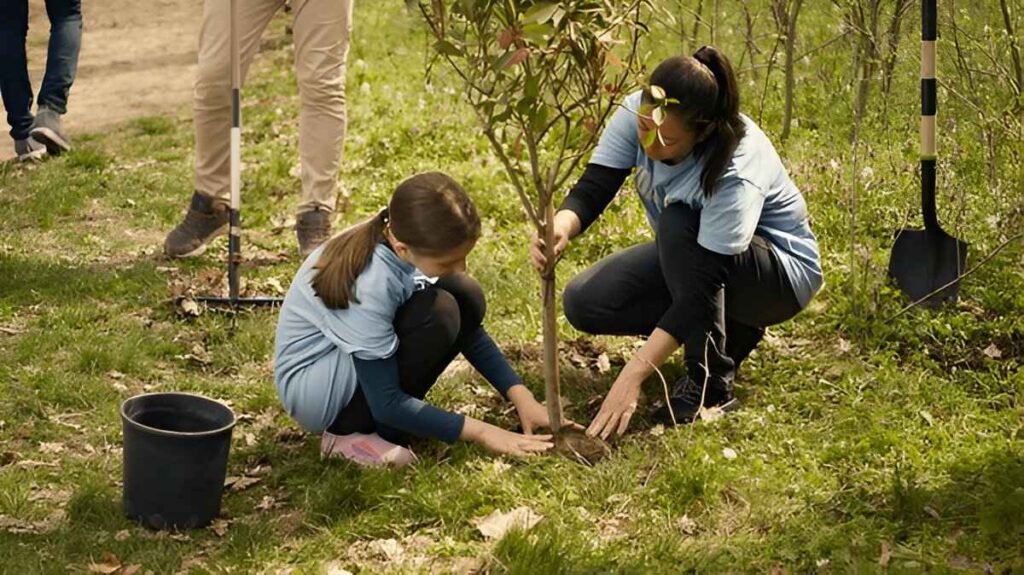Gardeners will appreciate the variety of climatic conditions and terrains that the USA has to offer, starting from the extremely cold northern plains to the hot southern coasts. To ensure a greater yield nonstop, gardeners are encouraged to boost their knowledge on the different conditions specific to their region. The USA is known for possessing unique challenges as well as opportunities in horticulture. This guide aims to assist every single individual in fully harnessing their gardening potential with every passing season.
Why should gardeners know their USDA hardiness zone?
Failure to check and consider the zone before engaging in any gardening activity may lead to planting losses, especially in the case of perennial flowers that experience seasonal dormancy. The USDA Hardiness Zone map is tailored to include 13 different zones classified according to their minimum temperatures in winter.
To ease your gardening hurdles, simply key in your details on the USDA zone Map and you’ll instantly find out the zone you fall under, along with the information concerning your perennials.
Cultivating by Climate lets you enjoy hassle free gardening throughout the year while maximizing your output.
Apart from Hardiness: We have noted that the USDA map is useful for perennials, but do recollect that many vegetables and annual flowers are grown seasonally and are more affected by your ending and starting frost dates as well as the summer’s heat.
Let’s split the planting calender to seasons while considering the different climatic regions.

Spring : The Great Awakening
Gardening enthusiasts would, without a doubt, consider spring as the most enthralling period of the calendar year. The combination of rising temperatures and the melting of the ground makes the longing to plant – a must.
General Spring Considerations for All Regions:
Last Frost Date is Key. You remember this: The timeframe is with respect to planting tender crops outdoors. Remember that the last frost date is the average in your specific locale.
Soil temperature. This is another matter: For early Spring, cool season crops can be planted once the soil is manageable (40-50 °F and 4 -10 °C). For warm season crops, much higher temperatures between 60-70 °F(15-21 °C) are required.
Finally, investing in a soil thermometer is helpful
Start seeds Indoors: In northern areas, rest of the regions warm season crops can be started indoors 6-8 weeks before the last frost.
Regional Spring Planting Highlights:
Northern Zones (USDA 3-5):
Early Spring (after soil is workable): Get peas, onion sets, lettuce, spinach, kale, radishes and carrots seedlings ready and put them in their open air beds.
Mid-to-Late Spring (after last frost): Plant hardy annual flowers (pansies, snapdragons) and warm-season vegetables (tomatoes, peppers, eggplant, squash, beans, corn) after the last frost. Also, summer-blooming bulbs like gladiolus and lilies should be planted at this time.

Northern Mid-Atlantic and Midwest Zones (USDA 6-7):
Early Spring: This region is similar to the Northern zones, but cool season crops might be started earlier.
Mid-to-Late Spring: It’s a good time to start planting perennial herbs like rosemary and thyme and warm-season vegetables and annuals.
Southern Zones (USDA 8-10+):
Early Spring: At this time, you should already be harvesting cool crops if planted in the fall/winter. This is also the best time for spring planting of warm-season vegetables.
Late Spring (as heat intensifies): Begin the planting of subtropical ornamentals and change focus to heat-tolerant varieties of vegetables. In the hotter regions of zone 9 and 10, some spring-planted crops may begin “bolting” (going to seed) or halting production as summer intensifies.
Summer: The Season of Abundance (and Heat)
For most people, summer is the season fort harvesting crops since the garden life sustains throughout this period.
Considerations for All Regions Above:
Best Practices: For utmost performance, all plants require uniform watering. In most cases, deep, sparse watering is optimal.
Pest Control: Organic approach should be embraced where possible to eliminate issues that are bound to pop up during hot and humid weather conditions.
Highlights of Summer Planting by Region:
Southern Zones: USDA 8-10+:
Engaging Mid and Late Summer: Focus on harvesting and planting melons, peas, sweet potatoes and okra while sustaining the harvest on heat-tolerant veggies.
Midwest/Mid Atlantic: USDA 6-7.
Engaging Early and Mid Summer: Keep up the summer harvest on associated crops, but shift attention to softneck garlic and onion, curb the pace on fast-maturing crops like beans, pumpkin, and summer patty pan squash.
Nordern Zones : USDA 3-5
Engaging Early-Winter: Curb on summer spuds while switching to winter wheat.
Mid to late summer (when the peak summer) heat bestows itself upon us: Some warm summer crops will struggle with the heat, for example, Common or Beefsteak Tomatoes. Concentrate on heat-savers or brace for a production halt until the fall. Beginnings of fibrous and leafy greens as well as the fall/winter garden is where your focus should be. Don’t forget to sow seeds of brassicas.
Winter: Rest, Planning, and Harvests During the Year
Whatever the winter season means for the U.S gardens, plans and preparations for it differ from one region to the other in the country.

Other Things To Consider When Winter Arrives:
Indoors: This may be the best way to nurture the love for gardening without minding the conditions of the weather outside.
Gardening: Look back and reflect on the previous season, prepare for the next, order additional seeds, and amend your soil.
Resting: Plants including outdoor ones go through dormant phases and for those in colder zones, it’s a must that each and every plant enters this stage.
Highlights of Plants For The Winter:
Northern Parts of The U.S (USDA Zones 3 – 5):
Outdoors: The garden is resting with heavy mulch over crops which must be protected with row covers. Need activities to do over this dormant period consider winter sowing.
Indoors: Can use herby seasonings like basil and cilantro and lettuces as well along with micro greens and for better results use light or planter windows. A good idea would be starting seedlings for early spring indoors.
Midwest and mid Atlantic Zones (USDA 6 – 7):
Plant Covers Outdoors: Use ‘cold frame’ and ‘Hoop House’ clampers in order to extend the period of harvesting greens such as kale and spinach. When using heavy mulch, carrot and parsnip root vegetables can be gathered in mild frosts.
Indoors: During the colder zones, the options were somewhat limited, but here the restrictions are enough to offer much more padding for starters.
Southern Zones (USDA 8-10+):
Outdoor: This is a great growing season for a lot of people! Plant and harvest all varieties of cool-season vegetables including all leafy greens, brassicas, root vegetables, and peas. Many perennial flowers will provide continuous color. Some regions can even grow citrus and other subtropical fruits.
Indoor: Much less attention is given to the warm season seedlings as direct sowing can happen quite early. Concentrate on tropical houseplants.
Enjoy the Ride
Gardening in the USA is an ever changing and fulfilling undertaking. Being aware of your particular USDA Hardiness Zone along with creating a planting calendar based on the local seasons can help you achieve a thriving garden, full of vibrancy and richness, every month of the year. Wishing you bountiful harvests!

